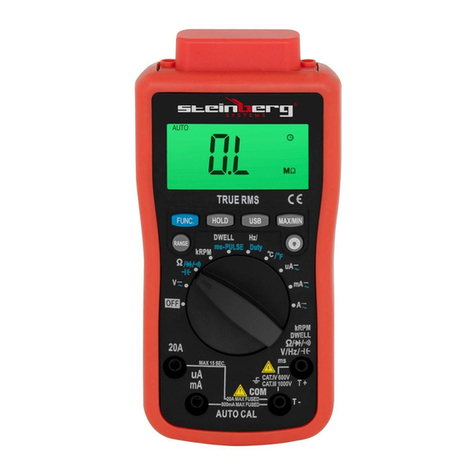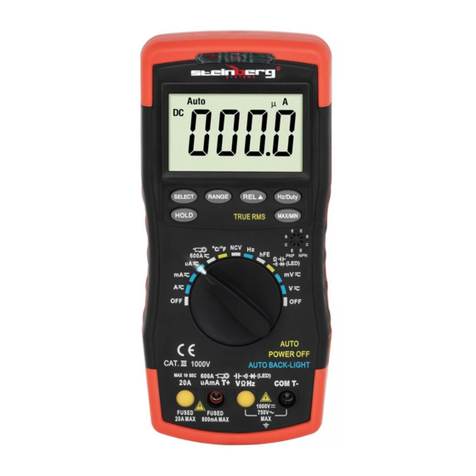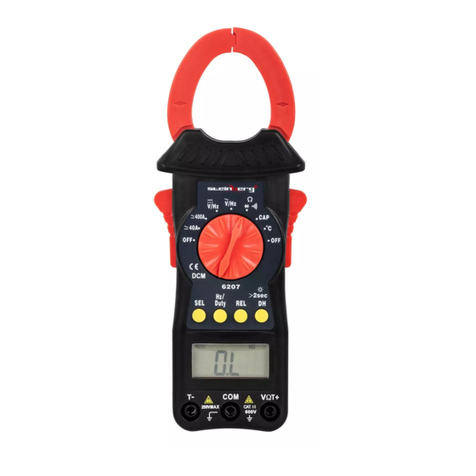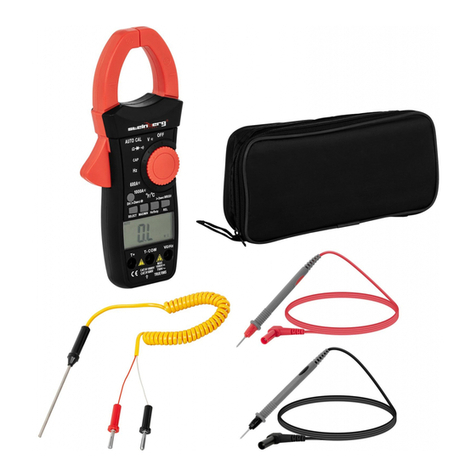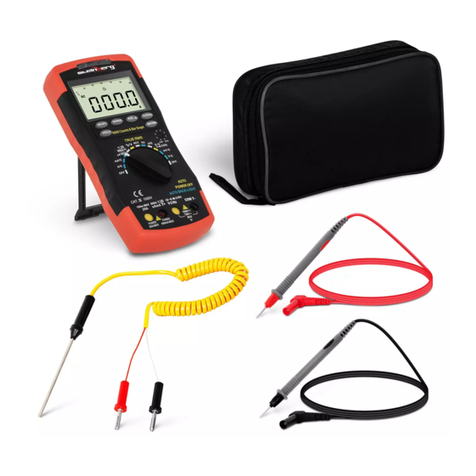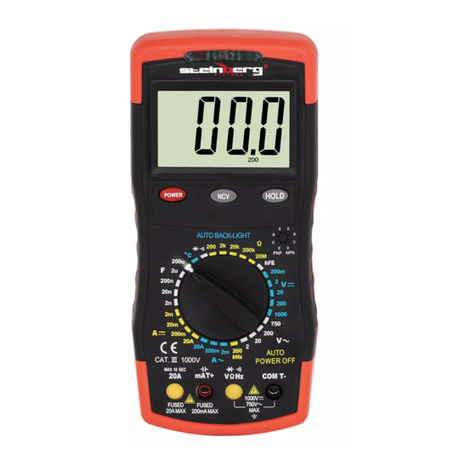
14 15
09.07.2019
b) W razie stwierdzenia uszkodzenia lub
uprawnionej.
samodzielnie!
2).
h) Elementy opakowania oraz drobne elementy
nadzoru.
UWAGA!
elektrycznych.
Odpowiedzialność za wszelkie szkody powstałe
w wyniku użytkowania niezgodnego z przeznaczeniem
ponosi użytkownik.
3. Przycisk D.HOLD: Blokowanie/ odblokowywanie
Link
7. Czujnik CDS
i zakresu pomiaru
13. Port USB
3.2. PRZYGOTOWANIE DO PRACY
UWAGA!
instrukcji na stronie 42.
celem zmiany jego parametrów lub budowy.
Opis parametru
Nazwa produktu Multimetr z testerem
akumulatora
Model SBS-DM-1000USB
Typ baterii 9V(6F22)
Moc znamionowa [W] 3
CATIII 1000
400mV~1000V/
4V~750V
51.2nF~100µF
Zakres pomiaru temperatury/
-20°C~1000°C/
5.12Hz~5.12MHz/
1%~99%
Klasa ochrony IP IP20
Maksymalny odczyt 4000
Temperatura pracy/
[°C/%RH]
0~40/<85
-10~50/<85
Wymiary [mm] 180x88x52
0,320
DANE TECHNICZNE
jest ustawione na odpowiedni zakres.
d) Przed wykonaniem pomiarów: rezystancji, testu
technicznym np. bez uszkodzenia izolacji.
i) Podczas dokonywania pomiaru przewody
do ogólnych zasad i wiedzy elektrotechnicznej.
na ten sam model lub o tych samych parametrach
elektrycznych.
w trakcie dokonywanego pomiaru.
1. OGÓLNY OPIS
Instrukcja przeznaczona jest do pomocy w bezpiecznym
PRZED PRZYSTĄPIENIEM DO PRACY NALEŻY
DOKŁADNIE PRZECZYTAĆ I ZROZUMIEĆ NINIEJSZĄ
INSTRUKCJĘ.
zgodnie ze wskazówkami zawartymi w tej instrukcji. Dane
aktualne. Producent zastrzega sobie prawo dokonywania
2.
UWAGA!
niemieckiego.
UWAGA!
ostrzegawczy).
PL PL
